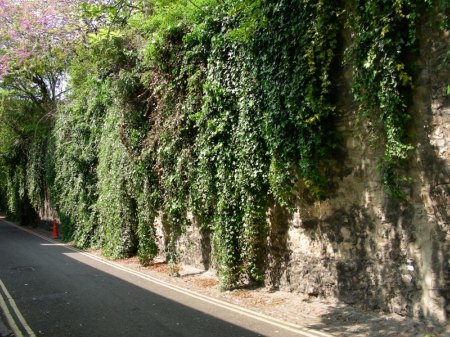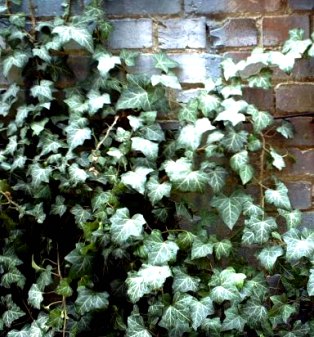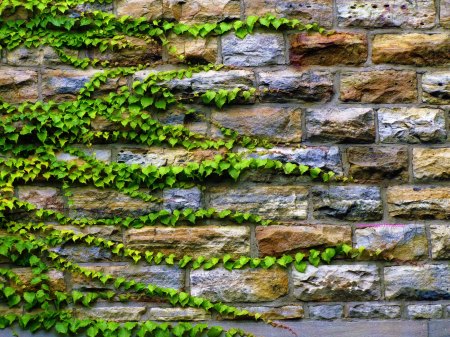Use ivy to protect walls from the elements
A new study reveals that ivy can actually protect walls against weather and pollutants


A new study by Oxford University, commissioned by English Heritage, reveals that ivy—which has always been considered damaging—can actually be good for walls, helping to protect them against the elements.

A covering of ivy acts as a ‘thermal shield', protecting walls against extreme temperatures that can cause them to crack.
The study showed found that ivy can warm walls by about 15% in cold weather and cool them by about 36% in hot weather. Ivy can also absorb some harmful pollutants in the atmosphere and potentially damaging salts.

The researchers looked at buildings in varying conditions in Oxford and around the country, including forts at Dover Western Heights, walls at Byland in North Yorkshire, Nailsea near Bristol and Leicester in the Midlands.

Heather Viles, Professor of Biogeomorphology and Heritage Conservation at Oxford University, said: ‘Ivy has been accused of destroying everything in its path and threatening some of our best-loved heritage sites.
‘Yet these findings suggest that there are many benefits to having ivy growing on the wall. It not only provides colourful foliage but also provides walls with weatherproofing and protection from the effects of pollution.'
However, the research also showed ivy can cause problems by spreading rapidly into the cracks and holes of damaged buildings.
Sign up for the Country Life Newsletter
Exquisite houses, the beauty of Nature, and how to get the most from your life, straight to your inbox.

Alan Cathersides, senior landscape manager at English Heritage, commented: ‘English Heritage is always keen to avoid unnecessary work to monuments, and we hope this research will lead to a more balanced approach to ivy.
‘Removal of ivy should not be automatic, as so often in the past, but a carefully considered element of long-term management.'
To comment on this article, use the comment box below, or email us at clonews@ipcmedia.com. Read more about the countryside
For more news stories like this every week subscribe and save
Follow Country Life on Twitter
Country Life is unlike any other magazine: the only glossy weekly on the newsstand and the only magazine that has been guest-edited by HRH The King not once, but twice. It is a celebration of modern rural life and all its diverse joys and pleasures — that was first published in Queen Victoria's Diamond Jubilee year. Our eclectic mixture of witty and informative content — from the most up-to-date property news and commentary and a coveted glimpse inside some of the UK's best houses and gardens, to gardening, the arts and interior design, written by experts in their field — still cannot be found in print or online, anywhere else.
-
 380 acres and 90 bedrooms on the £25m private island being sold by one of Britain's top music producers
380 acres and 90 bedrooms on the £25m private island being sold by one of Britain's top music producersStormzy, Rihanna and the Rolling Stones are just a part of the story at Osea Island, a dot on the map in the seas off Essex.
By Lotte Brundle Published
-
 'A delicious chance to step back in time and bask in the best of Britain': An insider's guide to The Season
'A delicious chance to step back in time and bask in the best of Britain': An insider's guide to The SeasonHere's how to navigate this summer's top events in style, from those who know best.
By Madeleine Silver Published
